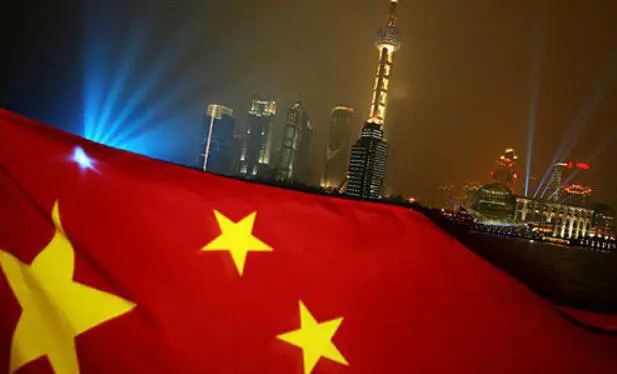The central government, in the Outline of the National Strategy of Innovation-Driven Development (hereinafter referred to as Outline) released by Minister of Science and Technology Wan Gang at a press conference held by the State Council Information Office on Thursday (May 23), defined the goals, development direction and key tasks for China's innovation-driven development in next three decades.
One of the highlights of the Outline is that it makes systematic deployment in industrial technology system and specifically defines the technological development direction of nine key fields including information, intelligent manufacturing, modern agriculture, modern energy and eco-environmental protection.
Deployment: speed up establishment of modern industrial technology system
In the opinion of Wan, one of the highlights of the Outline is that it makes systematic deployment in industrial technology system and specifically defines the technological development direction of nine key fields including information, intelligent manufacturing, modern agriculture, modern energy, eco-environmental protection, ocean and space, new-type urbanization, population health and modern tertiary industry. These are the key fields that the country will focus on in the future.
The Outline makes new deployment on promoting innovation in industrial technology system and developing new advantages. It prioritizes technological innovation in nine industries including new-generation information network technology and enriches contents of “Made in China 2025”. It is of great significance to include innovation of agriculture and tertiary industry, according to Chen Jin, professor of Tsinghua University School of Economics and Management and head of technological innovation research center.
In adherence to four basic principles of development, deepening reform, enhancing stimulus and further opening up, the Outline comes up with fulfilling the goals in three steps: to develop China into an innovation-oriented country by 2020, to make China rank top among innovation-oriented countries by 2030, and to build China into a technological innovation power by 2025.
Transformation: from investment-driven to innovation-driven
At present, China’s economic growth is still mainly driven by factors and investment. Statistics show that output of more than 200 industrial products of China ranks NO.1 in the world and that of energy, raw material, consumer goods and investment goods takes up one third to half of the global output. The continuously expanding production capacity exceeding market demand leads to over capacity; as a result, rate of enterprises’ equipment utilization is only about 70 percent.
Meanwhile, the developed countries refuse to sell core technologies due to various reasons. “Taking automobile industry for example, although China is the biggest automobile manufacturer and consumer in the world, key automobile components, which have high added value, mainly imported from foreign countries. What is veiled by the overcapacity is the essence with short supply of high-tech products and weakness in technological innovation ability.” according to Zheng Xinli, deputy director of the China Center for International Economic Exchanges and former deputy director of the Central Policy Research Office.
“Industrial revolution and new technological revolution are on the way across the world. Developed countries always strive for commanding height of new technologies. For instance, the U.S. has launched “innovative development strategy”. In the meantime, some developing countries also actively participate in global competition and some industries have been transferred to these countries”, as analyzed by Lyu Wei, head of Department of Techno-Economic Research, Development Research Center of the State Council. In her perspective, all these make it imperative for China to launch the Outline.
Supporting: strengthen guarantee and get out of innovation predicament
How to break down the “ceilings” and “glass doors” impeding the development of innovation has become the focus of attention. It is proposed in the Outline that as to the implementation of innovation-driven development strategy, greater efforts should be devoted to system reform, environment construction, resource input, expansion of opening-up and etc.
“Considering the assessment requirement in colleges, universities and scientific research institutions, some forged technical theses are published for promoting professional title. Excluding those forged ones and those hard to be commercialized, there are at least 30 to 50 quality theses among every 100 theses. But only dozens of them can be truly materialized in the end”, as remarked by Dr. Shang Peng, a researcher with Shenzhen Institutes of Advanced Technology, Chinese Academy of Sciences. He added that since the incentive mechanism for scientific and technical personnel goes wrong, not many research findings are effectively commercialized.
Wan also frankly stated at the press conference that “arrangement about knowledge and value-oriented income distribution system is made in the Outline. This is also a task assigned by the Outline and we are still studying on it”. He also disclosed that firstly, the proportion of stable income earned by various scientific and technical personnel will be lifted in the future. Secondly, scientific and technical personnel will be rewarded with benefit amid the process of advancing the commercialization of research findings so as to boost their initiative. Thirdly, the state and governments of all levels should grant scientific and technical personnel with more decision-making power in the funds of scientific research.
“Improvement of Chinese enterprises’ innovation abilities awaits acceleration on the whole, which is inconsistent with the urgency in implementing innovation-driven national strategy.” As to this, Chen Jin stated outright that for the implementation of the Outline, various detailed rules are called for, such as assessment and incentive mechanism encouraging original innovation, regulations and policies accelerating commercialization of research findings, action plans aiming to improve Chinese standards and Chinese brands and etc. The Outline designs the soft environment for creating innovation-driven development and plays a great guiding role. But deeper planning should be made to further advance high-end and sophisticated innovation like creating failure-tolerant system and reinforcing original innovation.
(APD/XH FINANCE)
 简体中文
简体中文

